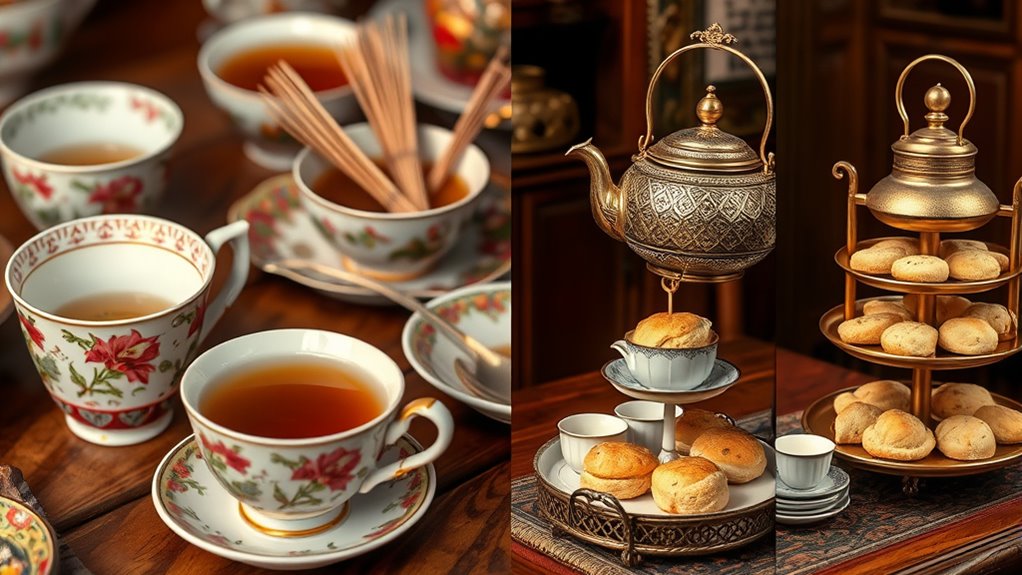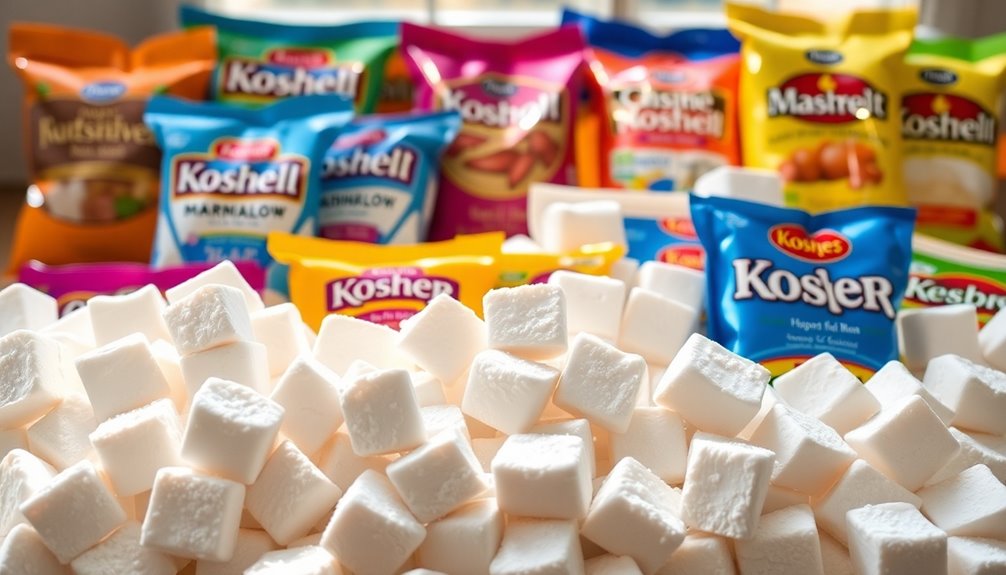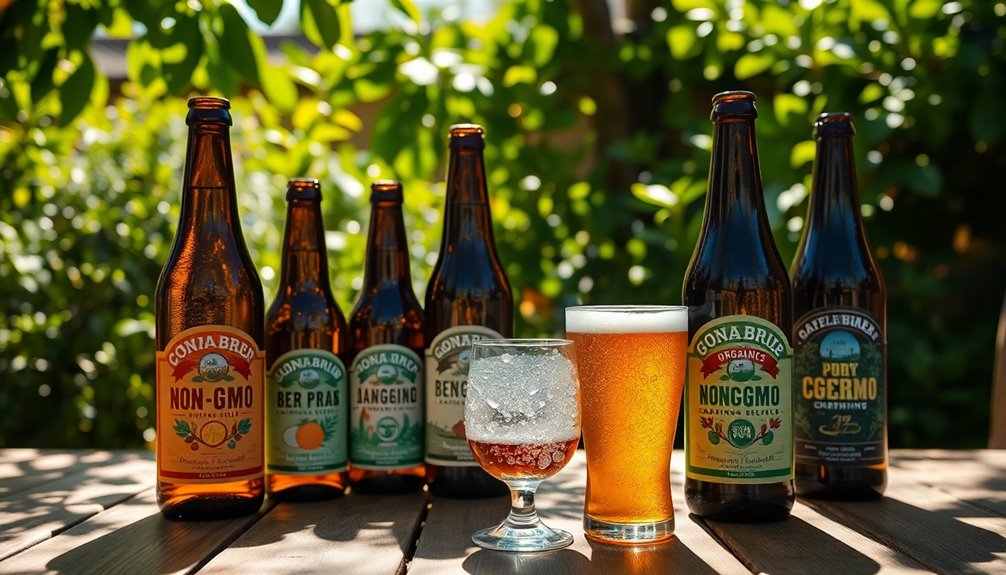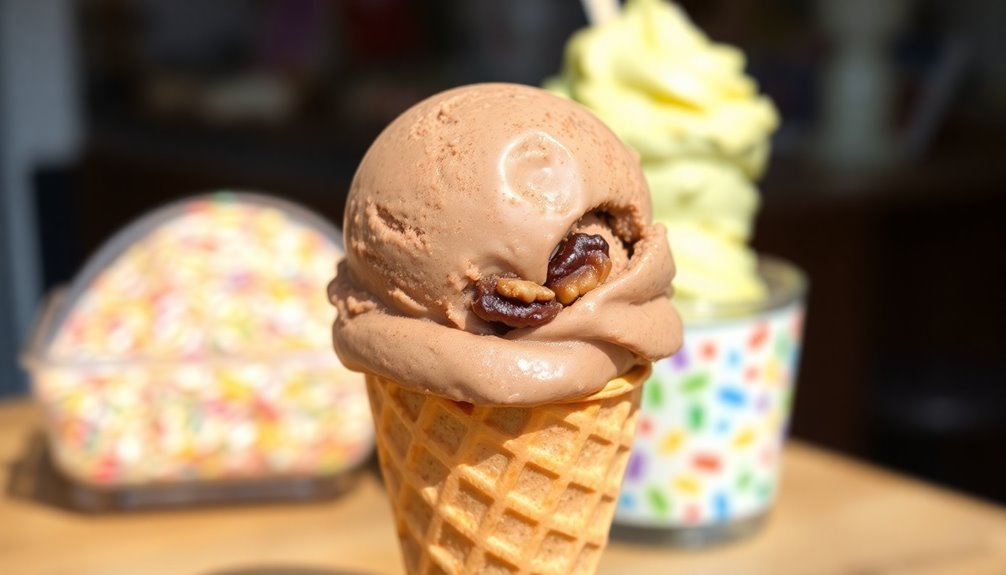Tea traditions around the world go far beyond just drinking a hot beverage. You’ll find rituals that symbolize hospitality, respect, and mindfulness, whether it’s Japan’s precise matcha ceremonies or Morocco’s relaxed communal brewing. Each culture emphasizes aesthetics, technique, and social bonding, turning tea into an art form that reflects deep values. Exploring these unique customs reveals how tea connects people and cultures, encouraging you to discover even more about these meaningful traditions.
Key Takeaways
- Tea ceremonies across cultures emphasize respect, mindfulness, and social bonding beyond just drinking, reflecting deep cultural values.
- Brewing techniques like Japanese matcha and Chinese gongfu cha highlight craftsmanship and enhance sensory experiences.
- Aesthetic presentation and ritualistic practices elevate tea from a simple beverage to an art form.
- Tea traditions foster community, hospitality, and cultural identity worldwide.
- Engaging in tea rituals promotes mindfulness, connection, and appreciation of diverse cultural histories.
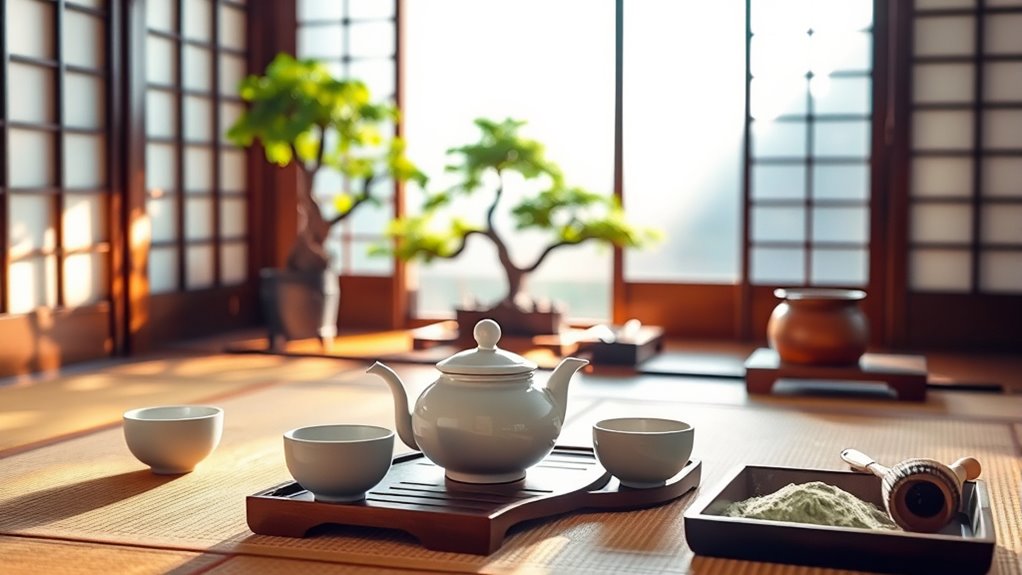
Tea holds a special place in cultures worldwide, serving as both a daily beverage and a symbol of hospitality. When you participate in tea ceremonies, you’re stepping into a tradition that embodies respect, mindfulness, and social connection. These ceremonies vary greatly from one culture to another, but they all emphasize the importance of preparing and sharing tea with care. Whether it’s the precise movements of a Japanese tea ceremony or the relaxed, communal brewing in Moroccan traditions, each ritual highlights the significance of the act itself. You might notice that the focus isn’t just on drinking tea but on creating a moment of tranquility and connection. The way tea is prepared, the tools used, and the etiquette followed all reflect deep cultural values.
Brewing techniques are fundamental to these traditions, and mastering them can deepen your appreciation for tea. In many cultures, the way you brew tea isn’t random; it’s a deliberate process that influences flavor and experience. For example, in Chinese gongfu cha, you might use small teapots and multiple short infusions, allowing you to extract the full complexity of high-quality leaves. The water temperature, steeping time, and even the pouring method are carefully controlled to get the best flavor. In contrast, British tea-drinking often involves steeping a tea bag in hot water for a few minutes, emphasizing convenience but still respecting tradition. In Japan, the ceremonial preparation of matcha involves whisking powdered green tea with hot water in a specific bowl, emphasizing mindfulness and precision. Recognizing the importance of hydration and nutrition can also enhance your overall tea experience, as many cultures incorporate tea into their wellness routines.
As you explore different brewing techniques, you’ll learn that each method influences the taste, aroma, and overall experience of the tea. Some cultures value the aesthetic aspects, like the presentation and utensils, while others focus on the sensory experience, such as aroma and mouthfeel. Practicing these techniques allows you to connect more deeply with the culture behind the tea and appreciate the skill involved. Whether you’re brewing delicate green teas, robust black teas, or fragrant herbal infusions, understanding the proper methods helps you access the full potential of each variety. Ultimately, these rituals and techniques turn a simple act of drinking tea into an art form, fostering mindfulness and respect for tradition. By immersing yourself in these customs, you become part of a global tapestry that elevates tea beyond just a beverage—making it a meaningful cultural experience.
Frequently Asked Questions
How Did Tea Originate in Different Cultures?
When you ask about how tea originated in different cultures, you’re exploring its fascinating cultural tea history. You’ll find that the tea plant origins trace back to ancient China, where legends say Emperor Shen Nong discovered its benefits. From there, tea spread to Japan, India, and beyond, each culture shaping unique traditions. You see, the journey of tea reflects countless stories of discovery, trade, and cultural significance worldwide.
What Are Some Unique Tea Preparation Methods Worldwide?
Imagine you’re in a tea shop in 18th-century London, watching a master perform ceremonial steeping. Across the globe, you discover unique methods like Japanese whisked matcha or Moroccan mint tea poured from a samovar. These practices involve intricate tea infusion techniques, highlighting cultural significance. Each method reflects traditions, from Chinese Gongfu brewing to Indian chai boiling, showcasing how diverse and special tea preparation truly is worldwide.
How Does Tea Influence Social Customs in Various Countries?
You see, tea influences social customs through tea etiquette and ceremonial significance, shaping interactions across cultures. In Japan, you participate in the precise tea ceremony, emphasizing respect and harmony. In Britain, sharing a cuppa fosters conversation and connection. In Morocco, mint tea becomes a symbol of hospitality. These traditions highlight how tea’s ceremonial role strengthens bonds and reflects cultural values worldwide, making it more than just a beverage.
Are There Health Benefits Linked to Traditional Tea Drinking?
You’ll find that traditional tea drinking offers several health benefits, thanks to tea antioxidants that boost your immune system and improve overall health. Herbal infusions, a popular variation, provide additional advantages like calming effects and digestive support. Drinking tea regularly can help reduce inflammation and protect against chronic diseases. So, by enjoying your favorite tea, you’re not only embracing tradition but also giving your body valuable health-boosting nutrients.
How Are Modern Trends Changing Traditional Tea Rituals?
Your curiosity about how modern trends are transforming traditional tea rituals is truly eye-opening. Today, you see a blend of ancient tea ceremonies with modern innovations like tea infusers and artisan blends, making each cup feel revolutionary. These trends are reshaping the tea ceremony, making it more accessible and personalized without losing its cultural essence. So, you get to enjoy tradition with a contemporary twist, creating a new tea experience every time.
Conclusion
As you explore tea traditions worldwide, you’ll see how this simple drink unites cultures in unique ways. Did you know that over 2 billion cups of tea are consumed every day? That’s like pouring a cup for every third person on Earth! It’s incredible to think how a single beverage can carry centuries of history and shared moments across continents. So, next time you sip your tea, remember you’re part of a global tradition that spans thousands of years.
